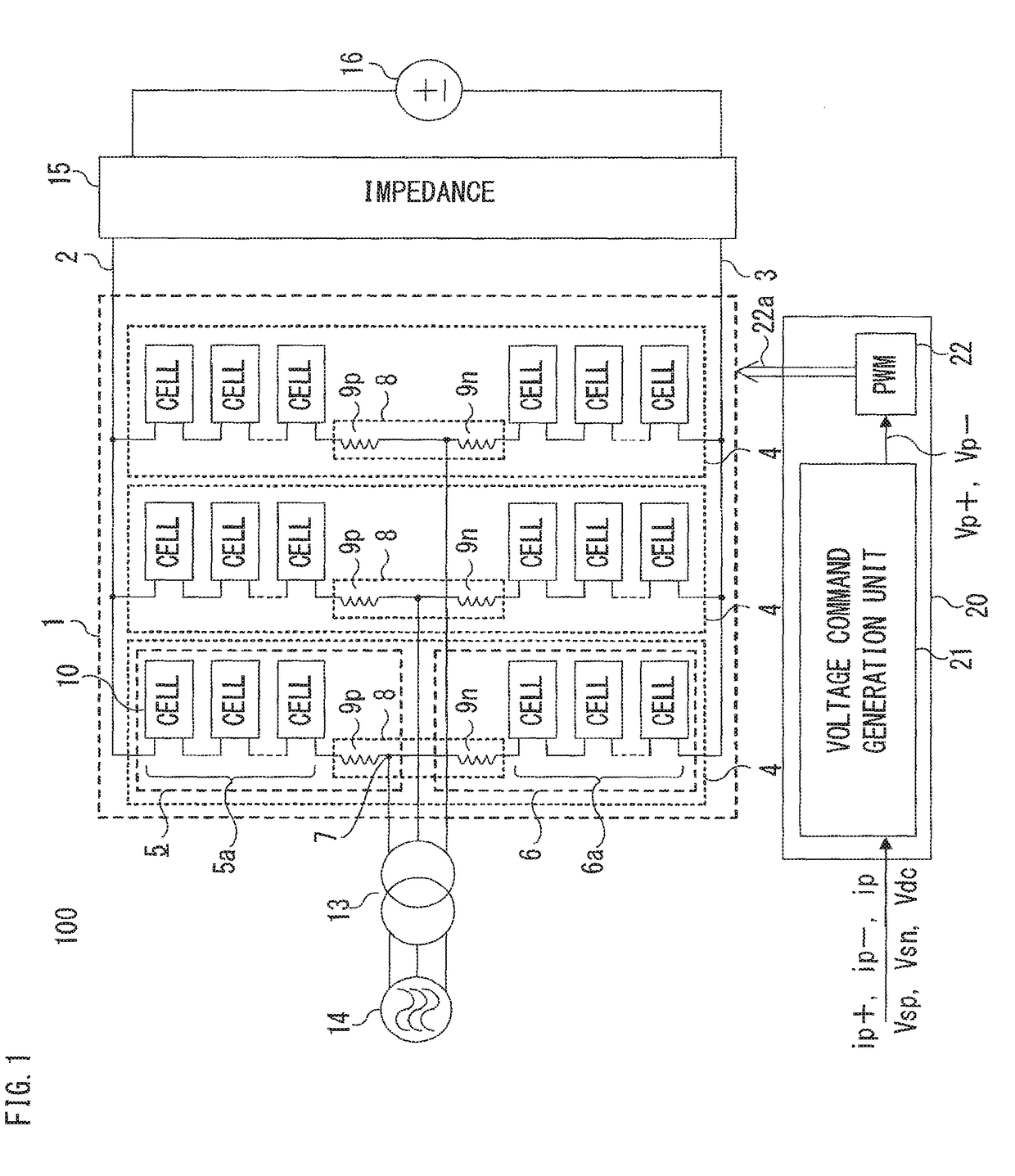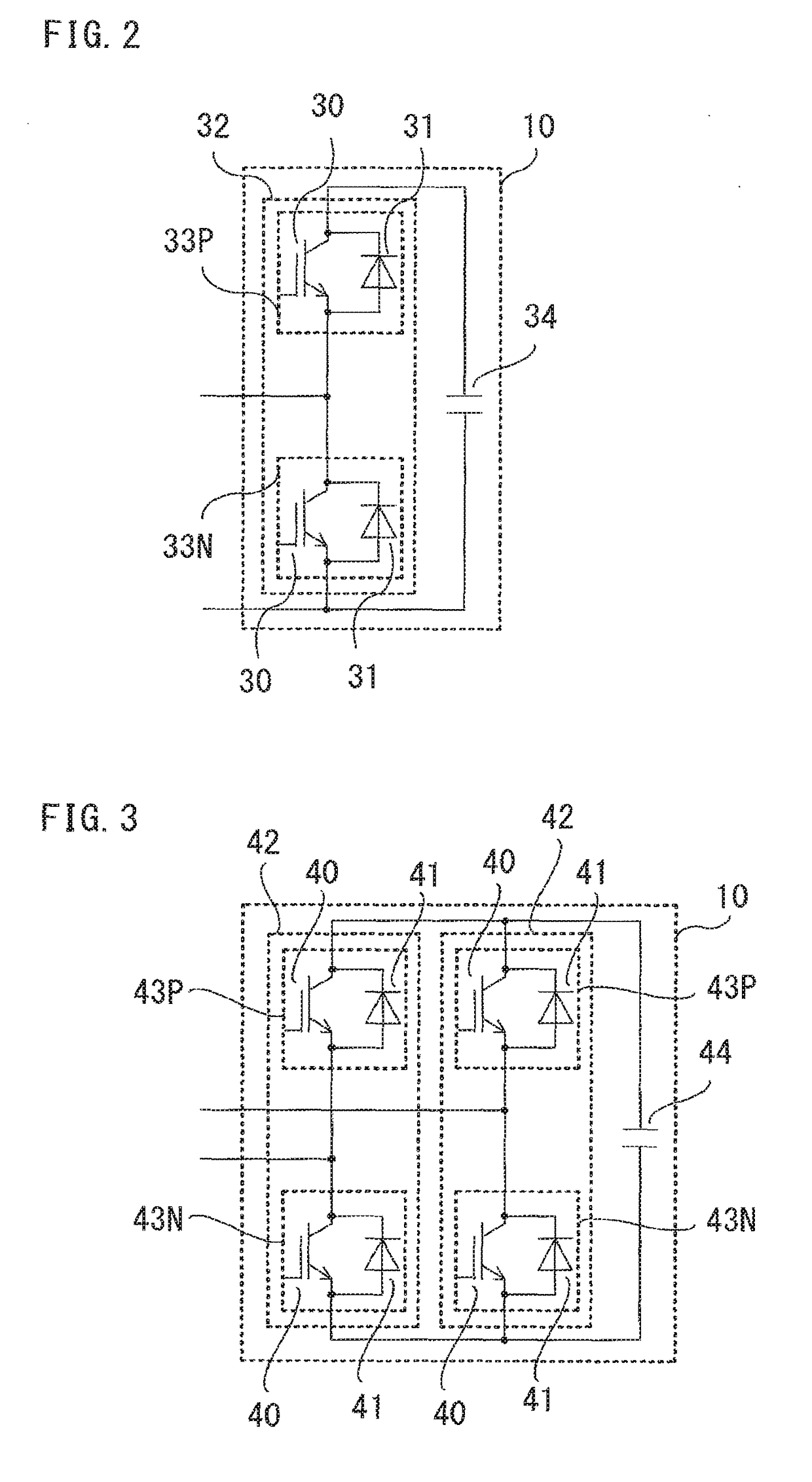Power conversion device
a technology of power conversion device and dc capacitor, which is applied in the direction of power conversion system, dc-ac conversion without reversal, electrical apparatus, etc., can solve the problems of complex multi-transformer, increase in transformer cost, imbalance between voltage of dc capacitor in the positive arm and voltage of dc capacitor in the negative arm, etc., to prevent overvoltage of dc capacitor, stable operation, and reduce calculation amount
- Summary
- Abstract
- Description
- Claims
- Application Information
AI Technical Summary
Benefits of technology
Problems solved by technology
Method used
Image
Examples
embodiment 1
[0023]Hereinafter, a power conversion device 100 according to embodiment 1 of the present invention will be described with reference to the drawings.
[0024]FIG. 1 is a schematic configuration diagram of the power conversion device 100 according to embodiment 1 of the present invention.
[0025]As shown in FIG. 1, the power conversion device 100 includes a power converter 1 as a main circuit, and a control device 20 for controlling the power converter 1. The power converter 1 performs power conversion between three-phase AC and DC. The AC side of the power converter 1 is connected via an interconnection transformer 13 to a three-phase AC power supply 14 which is a grid as a three-phase AC circuit. The DC side of the power converter 1 is connected via an impedance 15 to a DC power supply 16 which is a DC grid.
[0026]The power converter 1 includes a leg circuit 4 for each phase. Each leg circuit 4 is formed from a positive arm 5 and a negative arm 6 connected in series at an AC terminal 7 w...
embodiment 2
[0114]Hereinafter, with reference to the drawings, embodiment 2 of the present invention will be described focusing on a part different from the above embodiment 1. The same components as those in the above embodiment 1 are denoted by the same reference characters, and the description thereof is omitted.
[0115]FIG. 7 is a block diagram showing the detailed configuration of an arm balance control unit 227 according to embodiment 2 of the present invention.
[0116]The present embodiment and embodiment 1 are different in that, in embodiment 1, the polarity 61a of the zero sequence current in the positive arm 5 and the negative arm 6 is determined from the DC current Idc, whereas, in the present embodiment, the polarity 61a of the zero sequence current in the positive arm 5 and the negative arm 6 is determined and detected from active power P.
[0117]First, in the polarity determination unit 61, the direction of the zero sequence current in the positive arm 5 and the negative arm 6, i.e., th...
embodiment 3
[0121]Hereinafter, with reference to the drawings, embodiment 3 of the present invention will be described focusing on a part different from the above embodiment 1. The same components as those in the above embodiment 1 are denoted by the same reference characters, and the description thereof is omitted.
[0122]FIG. 8 is a block diagram showing the detailed configuration of an arm balance control unit 327 according to embodiment 3 of the present invention.
[0123]A neutral point adjustment value calculation unit 351 according to the present embodiment includes a selection determination unit 80 for comparing the magnitude of the DC current Idc flowing through the power converter 1 with a set threshold value.
[0124]If the magnitude of the DC current Idc is equal to or smaller than the threshold value, the selection determination unit 80 outputs “0” as determination information 80a1, and outputs “1” as determination information 80a2.
[0125]A multiplier 81 multiplies an output 60a of the mult...
PUM
 Login to View More
Login to View More Abstract
Description
Claims
Application Information
 Login to View More
Login to View More - R&D
- Intellectual Property
- Life Sciences
- Materials
- Tech Scout
- Unparalleled Data Quality
- Higher Quality Content
- 60% Fewer Hallucinations
Browse by: Latest US Patents, China's latest patents, Technical Efficacy Thesaurus, Application Domain, Technology Topic, Popular Technical Reports.
© 2025 PatSnap. All rights reserved.Legal|Privacy policy|Modern Slavery Act Transparency Statement|Sitemap|About US| Contact US: help@patsnap.com



